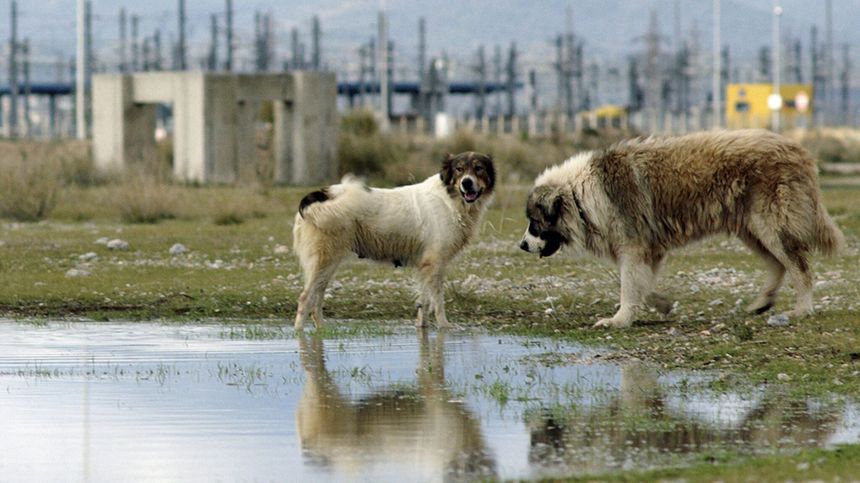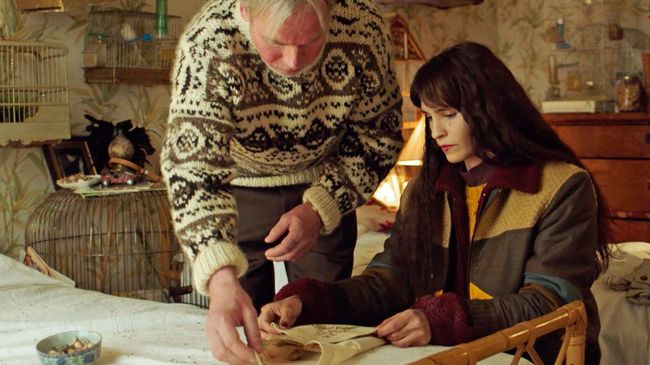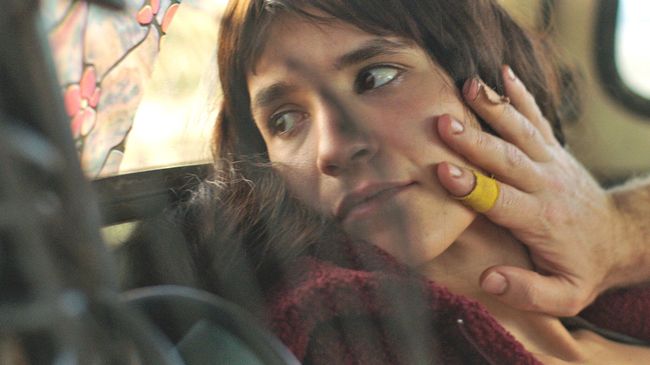Rotterdam 2020 Review: KALA AZAR, The Theatre of Earthly Poetry
The unassuming romance of two pet cemetery employers evolves into a larger artistic project in Janis Rafa's feature-length docu-fiction debut.

Greek cinema has been taking a backseat lately yet it did not entirely bow out of the stage of world cinema. The Greek director and visual artist Janis Rafa based in the Netherlands unveiled her feature-length fiction debut Kala Azar in this year's Tiger competition. The feature outing is a natural culmination of her artistic efforts encapsulated in short works and videoart installations as well as her singular aesthetics along remaining faithful to the topics she has been tackling so far.
The primal interest of Janis Rafa lies in the intersection of the human and animal world, their relationships and the space their share. It has been also the subject of her solo exhibition under the revealing title Eaten by Non-Humans. The Greek video artist works on universal topics and motifs revolving primarily and significantly around mortality and ritualized approach to loss.
Her films Father Gravedigger and Our Dead Dogs (as a part of the trilogy Three Farewells) refer to burial rituals blending the formalism of fiction and documentary approaches. The same principles guiding her short films and videoart oeuvres inform her first feature outing, not necessarily a manifesto but rather a testament to her previous works in form and substance alike.
Kala Azar (in translation black fever) is an epidemic infection decimating the canine population in Southern Europe but it sometimes spreads on humans as well. Similarly to her short works, Rafa picks dogs and humans as main conduit of her visions, the crucial plane of the film being hum-an-imal cross-connection, one of the strongest and most resonant letifmotif appearing in different iterations throughout the film.
Coming from a different artistic background transcending mediums is much welcomed and celebrated in Rotterdam. The interdisciplinary and syncretic approach characterizes Kala Azar, but most importantly, Rafa does not make compromises as she ventures on a new ground. It is just a bigger canvas, not a different inventory of tools nor grammar. Janis Rafa upholds her artistic integrity making Kala Azar a large project in the light of her preceding oeuvres and visions.
The most visibly offering to what can be described as conventional storytelling is the main story arc of the central pair, a young hippie and natural couple employed by pet crematorium, that holds the film together narrative-wise.
Penelope and Dimitris sleep, live, drive and copulate in a ramshackle vehicle while collecting tiny corpses. They do the same corpse-gathering routine at each household and returning ashes within 24 hours. Their work seems to be the only anchor in their otherwise freewheeling lives that have closer to animal roaming than the customs of human lifestyle.
Their going-ons produces the most coherent segment of the film even though, similarly to other imagery, even their scenes are merely a series of vignettes. Rafa fractures the plotline into a variety of snippets, some more relying on narration and plot development, others tackled as observations. The dialectics of fiction and documentary filmmaking produce a docu-fiction hybrid consisting of decentralized narrative.
Different protagonists can be identified for a different cluster of vignettes, several of them employed in a repetitive manner. However, the repetition does not a sign of monotony as it functions as a tool of extending a metaphor and readjusting metaphors begetting other metaphors on the leading themes of mortality, loss and trust.
The enigmatic story with vanishing shapes of a plot, communication predominantly channeled non-verbally and through physical interaction with animal either tail-wagging or stone-cold and decomposing, and the intentional post-apocalyptic vibe conjured on the outskirts of the anonymous city (shot around Athens, the artist´s hometown) raise the flags of Greek New Wave.
Yet only on paper as Rafa´s execution pertains to a different bag of tricks. It is an artistically mature vision albeit one willing and wanting to experiment and to not only hybridize the human and animal aspects but techniques, practices and more importantly forms.
Hardly any echoes of Greek New Wave aesthetics or any kind of deadpan surrealism. Rafa wields common, mundane objects and situations with the mind of a painter and the eye of a documentarist unearthing new expressions in factual and unstylized environment (Kala Azar features no grotesque imagery in the vein of Rafa´s woman with six nipples suckling young puppies).
Kala Azar is a formalistically fluid work transcending art forms and mediums resulting in a New Greek Post-Neo-Realism and theatre of earthly poetry (dirt, corpses, hair being the means of expression), a blend shaping up to emerge as Janis Rafa´s trademark whether in a gallery or in cinemas.
Kala azar
Director(s)
- Janis Rafa
Writer(s)
- Janis Rafa
Cast
- Penelope Tsilika
- Dimitris Lalos
- Errika Bigiou
- Michele Valley










